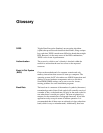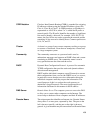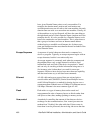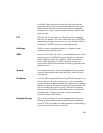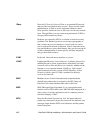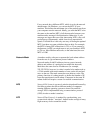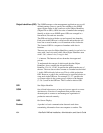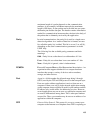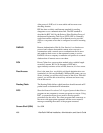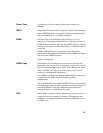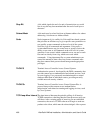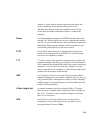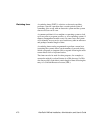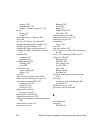465
maximum length of a packet depends on the communication
medium. As an example, in Ethernet networks the maximum
length is1500 bytes. A data packet can be divided into two parts:
the header part and the data part. The header contains information
needed for communication between nodes; the data is the body of
the packet that is ultimately received by the application.
Parity In serial communications, the parity bit is used in a simple error
detection algorithm. As a stream of data bits is formed, an extra
bit, called the parity bit, is added. This bit is set on (1) or off (0),
depending on the serial communications parameters set in the
UART chip.
The following lists the available parity parameters and their
meanings:
Odd – Parity bit set so that there is an odd number of 1 bits
Even – Parity bit set so that there is an even number of 1 bits
None – Parity bit is ignored, value is indeterminate
PCMCIA Personal Computer Memory Card International Association – An
organization that supports standards for a compact hardware
interface that accepts a variety of devices such as modems,
storage, and other devices.
Port A port is a 16-bit number (the allowed range being 1 through
65535) used by the TCP and UDP protocols at the transport layer.
Ports are used to address applications (services) that run on a
computer. If there was only a single network application running
on the computer, there would be no need for port numbers and the
IP address only would suffice for addressing services. However,
several applications may run at once on a particular computer and
we need to differentiate among them. This is what port numbers
are used for. Thus, a port number may be seen as an address of an
application within the computer.
PPP Point-to-Point Protocol. This protocol is a way to connect your
computer to the Internet over telephone lines. PPP is replacing an



